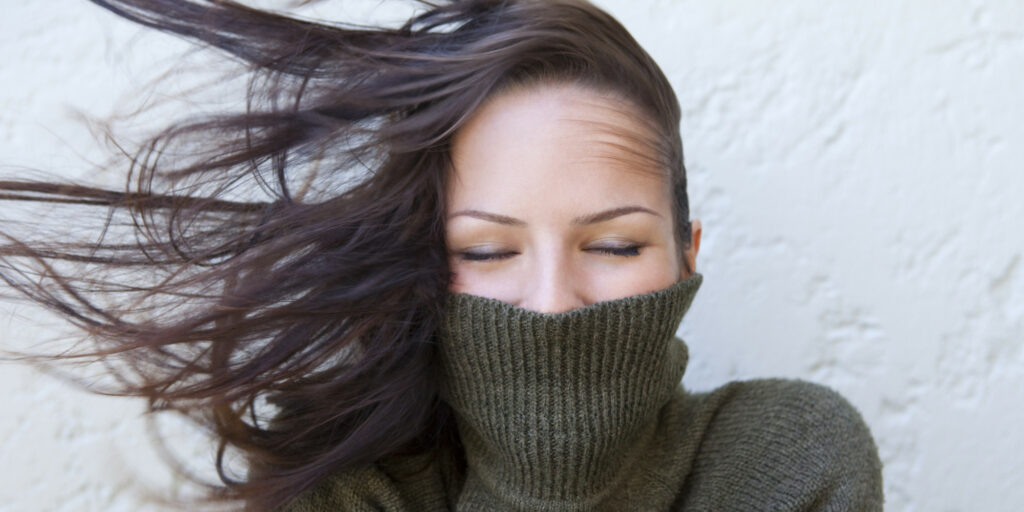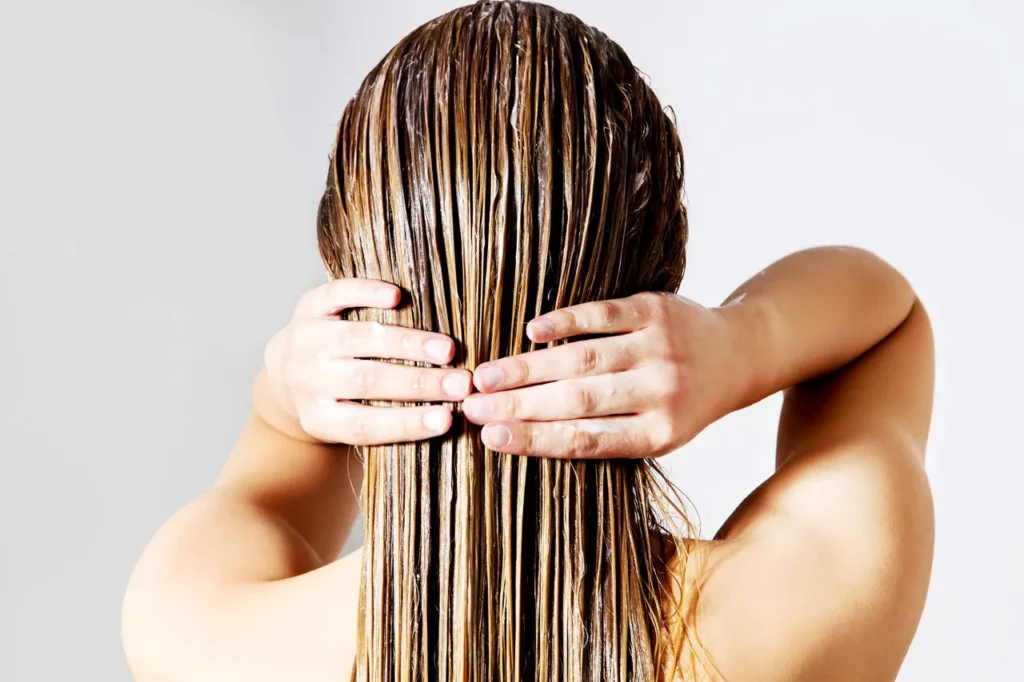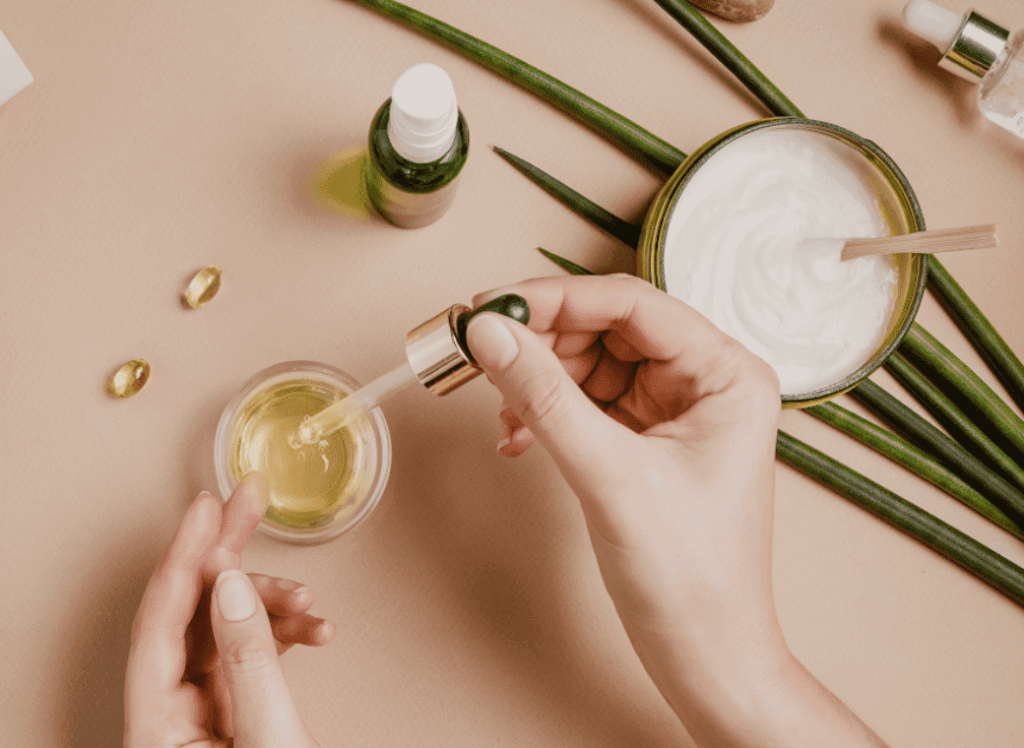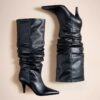Maintaining healthy hair can be challenging, especially with environmental factors like cold weather and indoor heat contributing to dryness and breakage. This article provides practical insights into effective hair care strategies, focusing on selecting the right moisturizing products, adopting protective styling techniques, and incorporating essential nutrients into your diet. By addressing these key aspects, you can enhance the health and resilience of your hair, reducing the risk of damage and promoting a vibrant appearance. Dive in to discover the solutions that can help you achieve your hair care goals.

Table of Contents
Moisturizing Techniques for Hydrated Hair
Achieving hydrated and healthy hair goes beyond using products; it involves adopting effective moisturizing techniques that cater to your hair type and texture. In this section, we will explore several strategies aimed at replenishing moisture, sealing in hydration, and ensuring your hair remains vibrant and resilient.
Understanding Hair Porosity
Before diving into moisturizing techniques, it’s essential to grasp the concept of hair porosity. Porosity refers to your hair’s ability to absorb and retain moisture. There are three primary categories:
- Low porosity: Hair that is resistant to moisture, requiring heat or steam for product absorption.
- Normal porosity: Hair that absorbs and retains moisture well, often requiring standard moisturizing techniques.
- High porosity: Hair that quickly absorbs moisture but also loses it just as fast, needing more frequent moisturizing.
Essential Moisturizing Techniques
Here are various techniques that can help maintain hydration in your hair:
1. The LOC Method
The LOC method stands for Liquids, Oils, and Creams. This technique is particularly beneficial for individuals with dry hair, helping to ensure that moisture is locked in effectively:
- L: Start with a liquid, ideally water or a hydrating leave-in conditioner.
- O: Follow with an oil that suits your hair type, such as argan oil or jojoba oil, to seal in the moisture.
- C: Finally, apply a cream-based moisturizer to further nourish and hydrate your hair.
2. Deep Conditioning Treatments
Integrating weekly deep conditioning treatments can drastically improve moisture retention. Look for products enriched with ingredients such as:
- Shea butter: Known for its intense moisturizing properties.
- Avocado oil: Rich in fatty acids, it penetrates the hair shaft for deeper hydration.
- Protein: Helps strengthen hair while maintaining moisture balance.
Apply a deep conditioner weekly, leaving it on for the recommended time, and considering the use of a warm towel or heat cap to enhance the treatment’s efficacy.
3. Humidity Control
In dry climates, maintaining good hair hydration may require environmental adjustments. Using a humidifier can help add moisture back into the air, which is beneficial for your hair and skin. Naturally, try to limit exposure to heat styling tools that can deplete moisture, opting for air-drying whenever possible.
4. Protective Styles
Wearing protective hairstyles not only helps prevent breakage but also aids in moisture retention. Try styles such as braids, buns, or twists that keep the ends of your hair tucked away from the elements. Use satin scarves or pillowcases to further minimize moisture loss during sleep.
Choosing the Right Products
Investing in good-quality moisturizing products is crucial. Look for leave-in conditioners, hair masks, and oils specifically formulated for your hair type. Ingredients to look for include:
- Aloe vera: A natural hydrator that soothes and moisturizes without weighing down hair.
- Glycerin: A humectant that attracts moisture from the environment into the hair.
- Keratin: Helps rebuild and strengthen hair while retaining moisture.
For an in-depth guide on choosing nourishing hair products, consider checking out this resource on hydration and conditioning tips.
Final Thoughts on Hair Hydration
Knowing and implementing effective moisturizing techniques can make all the difference in maintaining hydrated hair. Understand your porosity, adopt methods like the LOC technique, embrace weekly deep conditioning, and ensure you protect your hair against the elements. With the right practices in place, your hair can flourish with hydration and vitality.
Winter-Ready Hair Care Products
As the winter chill sets in, hair care takes on a new level of importance. The cold weather, paired with indoor heating, can wreak havoc on your locks, leading to dryness, frizz, and even breakage. To combat these winter hair challenges, it’s essential to adopt a well-thought-out hair care regimen using the right products. In this section, we will highlight top winter-ready hair care products that not only shield your hair from damage but also nourish and hydrate it throughout the season.
Moisturizing Shampoos
Start your winter hair care routine with a moisturizing shampoo. Look for formulas enriched with natural oils and humectants that help retain moisture. Ingredients like coconut oil, shea butter, and argan oil are excellent for combating dryness without stripping the hair of its natural oils.
- Shea Moisture Raw Shea Butter Moisture Retention Shampoo: This shampoo nourishes dry, damaged hair while providing it with much-needed moisture.
- OGX Coconut Milk Shampoo: Infused with coconut milk and cream, this shampoo helps in smoothing the hair cuticle and keeping frizz at bay.
Hydrating Conditioners
Follow up your shampoo with a rich hydrating conditioner. A good conditioner should not only detangle your hair but also replenish lost moisture. Look for products that contain proteins to strengthen hair and prevent winter breakage.
- Briogeo Don’t Despair, Repair! Deep Conditioning Mask: This intensive mask is perfect for weekly hydration and repair, making it a winter essential.
- Conditioner by Amika: A lightweight yet effective hydrating conditioner that delivers moisture without leaving a heavy residue.
Leave-In Conditioners and Creams
Leave-in conditioners are a game-changer during the winter months. They help provide an additional layer of moisture and protection to your hair, making it less susceptible to breakage and environmental stressors.
- It’s a 10 Miracle Leave-In Product: This leave-in not only hydrates but also protects against heat styling and environmental damage.
- Pattern’s Leave-In Conditioner: Perfect for those with textured hair, this product deeply moisturizes and defines curls while reducing frizz.
Hair Oils and Serums
Incorporating hair oils and serums into your routine can significantly enhance your winter hair care strategy. Oils provide added moisture and shine, while serums can help combat flyaways and frizz.
- Moroccanoil Treatment: A multi-tasking oil that hydrates, detangles, and adds shine to all hair types, making it a winter must-have.
- Olaplex No. 7 Bonding Oil: Not only does it provide moisture, but it also strengthens and protects hair from heat damage.
Specialty Treatments
For those particularly prone to winter dryness or damage, consider adding specialty treatments into your regimen:
- Olaplex No. 3 Hair Perfector: This treatment works to repair and strengthen hair from the inside out and can be used weekly for best results.
- Kérastase Nutritive Masquintense: A rich, nourishing mask designed specifically for dry hair, delivering intense hydration and a luxurious feel.
Scalp Care Products
Don’t forget about your scalp! A healthy scalp is crucial for healthy hair. Winter dryness can lead to flakiness and itchiness, so use scalp care products to maintain its health.
- Briogeo Scalp Revival Charcoal + Tea Tree Scalp Treatment: This treatment helps to detoxify and soothe itchy, flaky scalps.
- Lush Roots Hair Treatment: Containing a blend of peppermint and other fortifying ingredients, this treatment promotes a healthy scalp environment.
Choosing the right winter-ready hair care products is crucial for maintaining healthy, hydrated hair during the dry and cold months. From moisturizing shampoos and conditioners to specialty treatments and scalp care products, every aspect should cater to your hair’s unique needs.
As we transition to the next topic, let’s explore styling tips to prevent breakage during these challenging winter months. Understanding how to style your hair gently can further protect your investments in these premium hair care products.
Styling Tips to Prevent Breakage
Breakage can be a major concern for anyone striving for long, healthy hair. Whether you’re sporting curls, waves, or straight locks, it’s essential to adopt styling techniques that minimize damage and enhance hair strength. In this section, we’ll explore innovative styling tips that not only help prevent breakage but also promote overall hair health.
1. Choose the Right Tools
The right tools can make all the difference in maintaining hair integrity. Here are some recommendations:
- Heat Protectants: Always apply a heat protectant before using styling tools. These products create a barrier against high temperatures, reducing the risk of damage.
- Quality Brushes: Opt for **boar bristle brushes** or **wide-tooth combs** to gently detangle. These tools minimize friction and help distribute natural oils.
- Silicone-Free Hair Ties: Use elastics that are designed to prevent snags and breakage. Look for options made from soft fabric rather than traditional rubber bands.
2. Limit Heat Exposure
Excessive heat styling is a primary cause of hair breakage. Here are some strategies to keep your hair safe:
- Embrace Air Drying: Allow your hair to air dry when possible. If you must use a blow dryer, keep it on the lowest heat setting and maintain a distance of at least six inches from your hair.
- Alternate Styling Methods: Consider heat-free styling techniques, such as braiding damp hair for waves or using foam rollers for curls. These methods provide beautiful results without the heat damage.
- Save Heat Styling for Special Occasions: When you do use heat, try to limit it to once or twice a week. This provides your hair with time to recover and remain strong.
3. Use Moisture-Rich Products
Incorporating moisture-rich products can significantly reduce breakage. Consider the following:
- Leave-In Conditioners: After washing, apply a nourishing leave-in conditioner. These products not only provide hydration but create a protective layer against environmental stressors.
- Sulfate-Free Shampoos: Use sulfate-free shampoos to avoid stripping your hair of natural oils, which can lead to dryness and breakage. These shampoos clean without over-drying, promoting healthier hair.
- Deep Conditioning Treatments: Incorporate weekly deep conditioning treatments to replenish moisture and elasticity. Look for products infused with **argan oil**, **coconut oil**, or **shea butter** for optimal results.
4. Protect Your Hair While Sleeping
Your nightly routine can greatly affect the health of your hair:
- Silk or Satin Pillowcases: Switching to silk or satin pillowcases can reduce friction while you sleep, helping to prevent tangles and breakage.
- Loose Hairstyles: Avoid tight hairstyles such as tight ponytails or buns overnight. Instead, try a loose braid or a bun at the crown of your head to prevent tension on the hair shaft.
5. Be Mindful of Environmental Factors
Environmental factors can also contribute to hair breakage. Minimize their effects with these tips:
- Sun Protection: Just like your skin, your hair can suffer from sun exposure. Use hair products that contain UV filters or wear a hat when spending extended time outdoors.
- Chlorine Precautions: If you frequently swim, wear a swim cap or rinse your hair before diving in to minimize chlorine exposure, which can lead to dryness and fragility.
By following these styling tips, you can not only prevent hair breakage but also foster a healthier, more resilient mane. Remember, healthy styling is all about balance—incorporate these tips for a beauty routine that protects and nourishes your hair.
For more insights on nurturing your locks, check out this guide on preventing hair breakage. This resource provides additional strategies and expert advice for maintaining your hair’s health.
Essential Nutrients for Healthy Hair
Healthy hair is a reflection of our overall well-being, and what we consume plays a significant role in its strength, shine, and growth. While external hair care products can contribute to a good hair day, nutrients from our diet are the foundation of healthy hair. Below, we explore the essential nutrients that support hair health and how to incorporate them into your daily routine.
Vitamins and Minerals Vital for Hair Growth
A balanced diet rich in various vitamins and minerals is crucial for maintaining vibrant and strong hair. Here are key nutrients to focus on:
- Biotin: Often referred to as vitamin H, biotin is a part of the B-vitamin complex that is vital for the production of keratin, a key protein in hair. Foods rich in biotin include eggs, almonds, spinach, and sweet potatoes.
- Vitamin A: Necessary for cell growth, vitamin A helps in the production of sebum, an oily substance that keeps the scalp moisturized. Carrots, sweet potatoes, and dark leafy greens are excellent sources.
- Vitamin C: Known for its antioxidant properties, vitamin C helps protect hair follicles against damage from free radicals. It also aids in iron absorption, another vital mineral for hair health. Citrus fruits, strawberries, and bell peppers are high in this vitamin.
- Vitamin D: Emerging research suggests that a deficiency in vitamin D can lead to hair loss. Fatty fish, cheese, mushrooms, and fortified foods are good sources. Sun exposure is another effective way to attain adequate levels.
- Vitamin E: This vitamin promotes blood circulation in the scalp, allowing for better nutrient absorption. Nuts, seeds, and avocados are rich in vitamin E.
- Iron: Low iron levels are often linked to hair loss. Incorporate iron-rich foods such as red meat, lentils, spinach, and fortified cereals to maintain healthy levels.
- Zinc: Zinc supports tissue growth and repair, which is essential for hair follicles. Foods such as oysters, pumpkin seeds, and chickpeas can help meet your daily zinc needs.
Proteins: The Building Blocks of Hair
Since hair is primarily composed of a protein called keratin, consuming adequate protein is essential for healthy hair. Here’s how to include protein-rich foods in your diet:
- Lean meats: Chicken, turkey, and lean beef are excellent sources of protein.
- Legumes: Beans, lentils, and peas not only provide protein but also essential vitamins and minerals.
- Dairy products: Yogurt, cheese, and milk are rich in protein and may also contain beneficial probiotics.
- Fish: Fatty fish like salmon and mackerel are packed with protein and omega-3 fatty acids, which promote scalp health.
Healthy Fats: Essential for Moisture and Shine
Incorporating healthy fats into your diet is crucial for maintaining the moisture balance of your hair. These fats are integral for cell structure, including hair cells:
- Omega-3 fatty acids: Found in fatty fish, flaxseeds, and walnuts, these fats nourish the hair and help keep it shiny.
- Avocados: High in healthy fats and vitamin E, avocados can enhance the overall health of your hair.
- Olive oil: Rich in antioxidants, olive oil can improve scalp health and support hair growth.
Hydration: The Overlooked Factor for Healthy Hair
While nutrients are essential, hydration is often underestimated in its role for hair health. Water plays a crucial role in cellular function and maintaining moisture levels in hair follicles. Aim for at least 8-10 glasses of water a day, and consider foods with high water content, such as cucumbers, oranges, and melons.
Incorporating these vital nutrients into your regular diet can pave the way towards achieving healthy, vibrant hair. A nutrient-rich diet not only promotes hair growth and strength but also enhances overall health and well-being.
For further reading on nutrition and its effects on hair health, check out the article on WebMD.

Maintaining healthy hair, especially during winter, requires a focused care regimen. Start with moisturizing shampoos and conditioners, rich in natural oils like coconut and shea butter, to combat dryness. Incorporate leave-in conditioners, hair oils, and specialty treatments to provide extra hydration. Choose the right styling tools, limit heat exposure, and protect your hair during sleep to prevent breakage.
Additionally, a nutrient-rich diet is vital for hair health. Key nutrients include biotin, vitamins A, C, and D, protein, and healthy fats from sources such as fatty fish, avocados, and nuts. Staying hydrated is equally important for maintaining moisture in hair follicles. Combining these hair care practices with a balanced diet can significantly enhance the strength, shine, and overall vitality of your hair.












